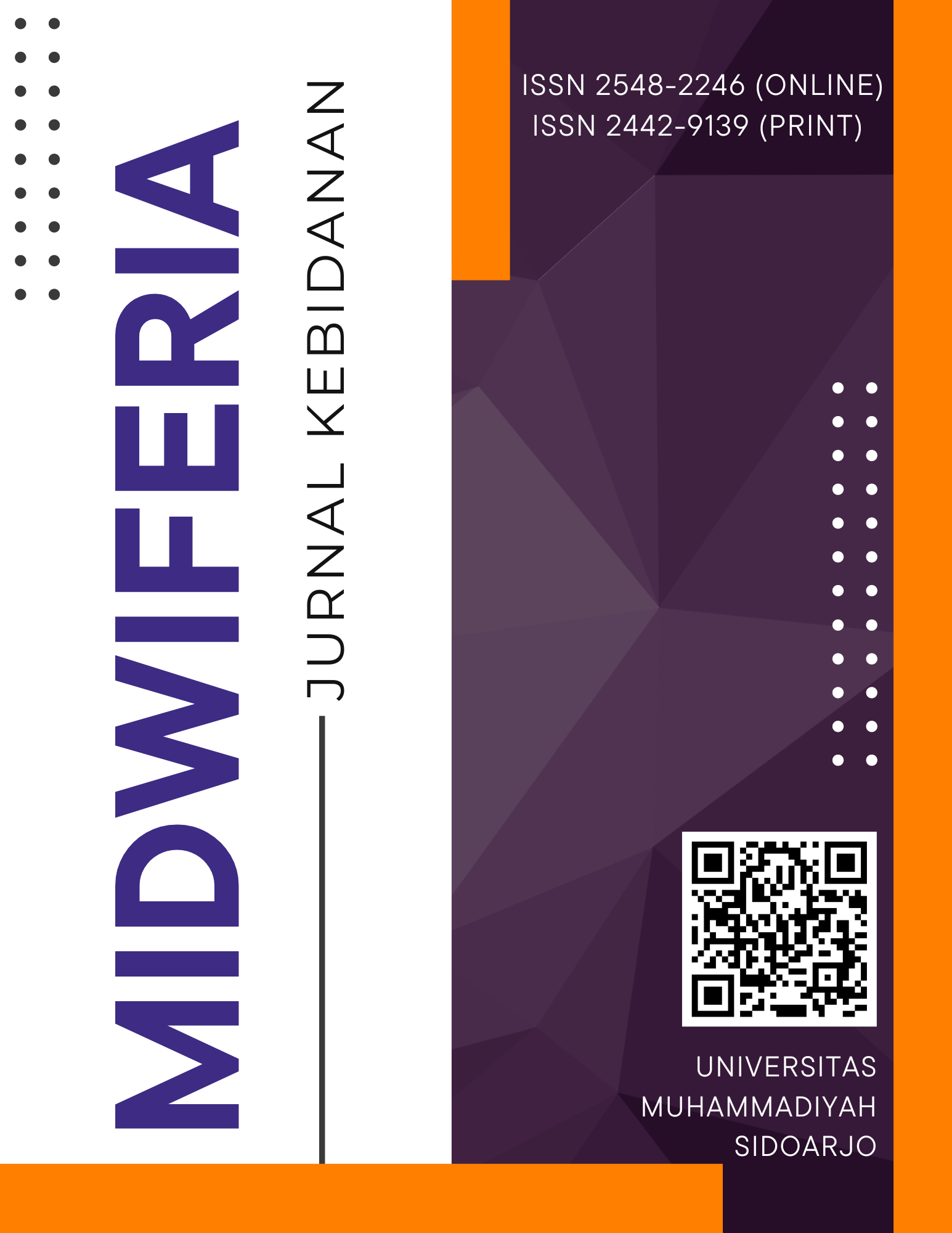TEKNIK MENYUSUI YANG BENAR DITINJAU DARI USIA IBU, PARITAS, USIA GESTASI DAN BERAT BADAN LAHIR DI RSUD SIDOARJO
CORRECT BREASTFEEDING TECHNIQUES FROM MOTHER'S AGE, PARITY, GESTATION AGE AND BIRTH WEIGHT AT SIDOARJO Hospital
DOI:
https://doi.org/10.21070/mid.v1i1.348Keywords:
Maternal age, parity, gestation age, birth weight, breastfeeding practiceAbstract
Breastfeeding is a natural process where nearly all mother can breastfeed her baby without help from others, but in fact not all mother can breastfeed with the correct technique of breastfeeding. Based on previous studies, in Primary Health Care of Waru, 75% breastfeed mothers with wrong technique. This research is analytic with cross sectional design, using the primary data and secondary data. The sampling using the probability sampling, with the simple random sampling technique. The sample used as much as 45 persons of breastfeeding mothers than 50 population. The data was presented in the form of the frequency tabulation and cross tabulation, and then was analyzed with the test of the chi-square and the fisher exact with α = 0,05. The result of this research showed maternal age ≥ 19 years old (93,3%), multipara (68,9%), level of education senior high school (44,4%), work as house wife (68,9%), pervaginam labour (57,8%) and cesarean section (42,2%), gestation age ≥ 37 weeks (93,3%) and birth weight ≥ 2500 grams (93,3%). Most of breastfeeding technique was incorrect (53,3%) and correct breastfeeding technique (46,7%). The majority of respondent has no breast problem (82,2%). There is statistically no relationship between maternal age (p=0,142), parity (2count=0,96), gestational age (p=0,142) and birth weight (p=0,142) with correct technique of breastfeeding.
References
BBKBN. 2008. Pendewasaan Usia Perkawinan dan Hak-Hak Reproduksi Bagi Remaja Indonesia. Jakarta: BKKBN
Bobak, Lowdermik, dan Jesen. 2004. Keperawatan Maternitas. Jakarta: EGC
Cunningham, G. dkk. 2009. Obstetri Williams Panduan Ringkas Edisi 21. Jakarta: EGC
Coca KP, Gamba MA, Silva RS, Freitas V, Abrão AC. 2009. Does breastfeeding position influence the onset of nipple trauma?Rev Esc Enferm. USP;43:442-8. DOI: https://doi.org/10.1590/S0080-62342009000200026
Fraser, D.M. dan Cooper, A.M. 2009. Buku Ajar Bidan. Jakarta: EGC
Goyal. AS, Banginwar, Ziyo F , and Toweir AA. 2011. Breastfeeding practices: Positioning, attachment (latch-on) and effective suckling – A hospital-based study in Libya. J Family Community Med. 2011 May-Aug; 18(2): 74–79 DOI: https://doi.org/10.4103/2230-8229.83372
Khasana, N. 2011. ASI Atau Susu Formula ya? Jogjakarta: FlashBooks
Maryunani, A. 2009. Asuhan Pada Ibu Dalam Masa Nifas. Jakarta: Trans Info Medika Keperawatan. Edisi 2. Jakarta: Salemba Medika
Riksani, R. 2012. Keajaiban ASI. Jakarta: Dunia Sehat
Roesli, U. 2000. ASI Eksklusif. Jakarta: Trubus
Agriwidya Varney, H. dkk. 2006. Asuhan Kebidanan. Jakarta: EGC World
Health Organization (WHO). 2009. Infant and Young Child Feeding. Model Chapter for Textbooks for Medical Students and Allied Health Professionals; Session 1 : The Importance of Infant and Young Child feeding and recommended practices; pp. 5–6






